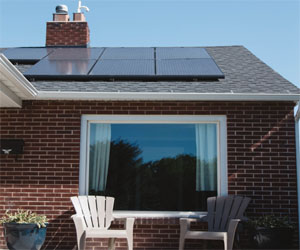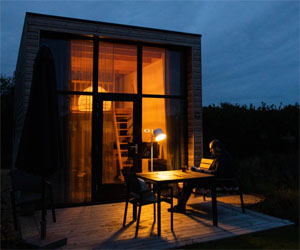


A Bright Path To Sustainable Energy

In an era marked by increasing environmental concerns and growing energy demands, "going solar" has emerged as a compelling solution to meet our energy needs while reducing our carbon footprint. The sun, a nearly infinite and sustainable resource, offers the power to transform our energy landscape. In this article, we will explore the journey of "going solar" and the myriad benefits it brings to individuals and the planet.
The Solar Journey
Going solar involves harnessing the sun's abundant energy through the installation of photovoltaic (PV) solar panels on your property, typically the roof of your home. The process is both exciting and straightforward:
Assessment: The journey begins with a thorough assessment of your property's suitability for solar panels. Factors such as sunlight exposure, shading, and the condition of your roof are taken into account to determine the best solar solution for your needs.
Design And Planning: Once the assessment is complete, a customized solar system design is created. This design takes into consideration your energy requirements and the available space for solar panels.
Permitting: Before installation can commence, you'll need to secure necessary permits and approvals from local authorities. Your solar installation provider will assist you with this essential step.
Installation: The solar panels and related equipment, such as inverters and mounting systems, are professionally installed on your property. These panels are strategically placed to maximize exposure to sunlight.
Connection To The Grid: In many cases, residential solar systems are connected to the energy grid. This connection enables excess energy to be sent back to the grid, often earning you credits or compensation.
Testing And Inspection: After installation, the system undergoes thorough testing to ensure it is functioning correctly. Inspections may also be conducted to verify compliance with local regulations.
Monitoring And Maintenance: Once installed, your solar system will be continuously monitored to track its performance. Routine maintenance, including cleaning the panels and addressing any issues, is essential to ensure the system runs efficiently.
The Benefits Of Going Solar
Clean And Renewable Energy: Going solar allows you to harness a clean and renewable energy source. Solar panels produce electricity without releasing harmful emissions, helping reduce your carbon footprint.
Lower Energy Bills: Solar panels can significantly reduce your electricity bills by generating your power. This means you purchase less electricity from conventional utility providers.
Energy Independence: With solar panels, you gain a degree of energy independence. You're no longer entirely reliant on the grid, ensuring a more constant supply of electricity, especially during power outages.
Increased Property Value: Homes with solar panels are often more appealing to buyers, potentially increasing the value of your property.
Government Incentives: Many governments offer incentives, tax credits, and rebates to encourage solar adoption, making it a more affordable option.
Environmental Impact: Going solar helps combat climate change by reducing greenhouse gas emissions and conserving natural resources.
The Decision To Go Solar
"Going solar" is not just a trend; it's a practical and eco-friendly solution for those who wish to reduce their carbon footprint, lower their energy bills, gain energy independence, and increase their property value. With government incentives and advancements in solar technology, transitioning to solar power has never been more accessible. If you're considering going solar, consult with a reputable solar installation provider to assess your needs and explore the options available for your home. Embracing solar power is not only a smart financial decision but also a significant step toward a cleaner, more sustainable future.
Embracing Self-Sufficiency And Sustainability
 Key Principles Of The Off-Grid Living Movement:
Key Principles Of The Off-Grid Living Movement:
Self-Sufficiency: At the heart of the off-grid living movement is the desire for self-sufficiency. Off-gridders aim to provide for their own basic needs, such as energy, water, and food, without relying on external infrastructure. They often employ renewable energy sources, such as solar panels and wind turbines, and use water collection and purification methods.
Sustainability: Sustainability is a cornerstone of off-grid living. This lifestyle emphasizes responsible and eco-conscious practices, from recycling and composting to sustainable agriculture and permaculture. Off-gridders typically seek to minimize their ecological footprint and reduce waste.
Resourcefulness: Off-grid living requires resourcefulness. Those who embrace this lifestyle must be creative and adaptive to overcome the challenges of living independently. They often build their homes using natural materials and repurpose everyday items to serve multiple purposes.
Connection With Nature: Off-grid living fosters a deep connection with the natural world. Many individuals who choose this lifestyle opt for remote locations, surrounded by the beauty of nature. They often forage for wild edibles, learn about local ecosystems, and live in harmony with the environment.
Minimalism: Minimalism is a common theme in off-grid living. By reducing the reliance on modern conveniences and material possessions, individuals often discover a simpler and more meaningful way of life.
Community: Contrary to the perception of complete isolation, many off-grid individuals form tight-knit communities where like-minded people come together to share knowledge, resources, and a sense of camaraderie. These communities enable collective development of sustainable practices.
Benefits Of The Off-Grid Living Movement:
Reduced Environmental Impact: Off-gridders significantly lower their environmental footprint. They use renewable energy sources, minimize waste, and employ sustainable agricultural methods, making their lifestyles more eco-friendly.
A Sustainable Approach To Water Management
 The Importance Of Water Harvesting Systems
The Importance Of Water Harvesting Systems
Water harvesting, also known as rainwater harvesting, represents a forward-thinking approach to water management for several reasons:
Conservation: Water harvesting helps conserve precious freshwater resources by utilizing rainwater for non-potable purposes, reducing the demand on conventional water sources.
Environmental Stewardship: These systems promote responsible water use, reduce runoff, and contribute to the health of local ecosystems by preventing soil erosion and aiding in groundwater recharge.
Water Resilience: In the face of climate change and increased instances of drought, water harvesting can provide a dependable source of water for a variety of applications.
Cost Savings: By reducing reliance on treated water from utilities, water harvesting systems can lead to lower water bills and savings for both homeowners and businesses.
Types Of Water Harvesting Systems
Rooftop Rainwater Harvesting: This is one of the most common and straightforward systems. Rainwater collected on rooftops is channeled through gutters and downspouts into storage tanks or cisterns. It is often used for landscape irrigation, flushing toilets, and other non-potable applications.
Embracing The Future Of Convenience And Efficiency
 Smart Homes: The Cornerstone Of Automated Living
Smart Homes: The Cornerstone Of Automated Living
At the heart of automated living are smart homes. Smart homes are equipped with a wide range of devices and systems that can be controlled remotely and often autonomously. These include smart thermostats, lighting systems, security cameras, and even kitchen appliances. The integration of these devices into a centralized control hub, often accessible through a smartphone or voice-activated device, allows homeowners to create a fully automated and customized living environment.
Convenience Redefined
One of the primary appeals of automated living is the enhanced convenience it offers. Imagine arriving home on a scorching summer day to find your smart thermostat has already adjusted the temperature to your preferred level. Or, picture a scenario where your home's lights gradually brighten in the morning as you wake up, and your coffee maker starts brewing your morning cup without you lifting a finger. These examples illustrate how automation can simplify daily routines and make life more enjoyable.
Energy Efficiency
Automation also plays a pivotal role in promoting energy efficiency. Smart thermostats, for instance, can learn your heating and cooling preferences and create schedules that reduce energy consumption.
A Sustainable Future
 Energy Efficiency: Environmentally friendly homes prioritize energy efficiency through measures like well-insulated walls, roofs, and windows. They often incorporate high-efficiency heating and cooling systems and utilize energy-efficient lighting and appliances to reduce energy consumption.
Energy Efficiency: Environmentally friendly homes prioritize energy efficiency through measures like well-insulated walls, roofs, and windows. They often incorporate high-efficiency heating and cooling systems and utilize energy-efficient lighting and appliances to reduce energy consumption.
Renewable Energy Sources: Many eco-friendly homes feature renewable energy sources such as solar panels, wind turbines, or geothermal heating and cooling systems. These technologies allow homeowners to generate their own clean energy and even feed excess energy back into the grid.
Water Efficiency: Water conservation is a critical component of environmentally friendly homes. Features like low-flow faucets, water-efficient appliances, and rainwater harvesting systems help reduce water consumption and lower utility bills.
Sustainable Materials: The construction of these homes often relies on sustainable and recycled materials, such as reclaimed wood, bamboo flooring, and recycled metal. This not only reduces the demand for new resources but also minimizes waste.
Indoor Air Quality: Environmentally friendly homes prioritize indoor air quality through the use of non-toxic and low-VOC (volatile organic compounds) paints and finishes. Additionally, efficient ventilation systems promote clean and healthy indoor air.
Thriving In Compact Living
 1. Multifunctional Furniture
1. Multifunctional Furniture
One of the key principles of small space efficiency is multifunctional furniture. These pieces serve multiple purposes, allowing you to make the most of every square inch. Sofa beds, fold-out desks, and dining tables with hidden storage are excellent examples. They provide comfort and functionality without monopolizing valuable space.
2. Vertical Storage
Utilizing vertical space is a game-changer in small spaces. Wall-mounted shelves, cabinets, and hooks create storage opportunities while keeping the floor area open and uncluttered. Vertical storage can also lend a sense of height and depth to your small space, making it feel more expansive.
3. Clear Clutter Regularly
Living in a small space necessitates regular decluttering. Be selective about what you keep, and embrace the philosophy of "less is more." Donate or sell items you no longer need, and make a conscious effort to prevent new clutter from accumulating.
4. Dual-Purpose Rooms
In small homes, one room often serves multiple functions. For instance, your living room might double as a home office, or your bedroom may also function as a gym. Careful planning and the use of flexible furniture can help you transition seamlessly between these different roles.
5. Custom Storage Solutions
Small spaces often require custom storage solutions. Investing in customized cabinets, built-in shelves, and under-stair storage can help you maximize every available nook and cranny. Tailoring your storage to your specific needs can make a significant difference in small space efficiency.
6. Natural Light And Mirrors
Natural light can make a small space feel more open and airy. Ensure that windows are not obstructed, and consider light-filtering window treatments to let in sunlight. Mirrors strategically placed on walls can reflect light and create an illusion of more space.